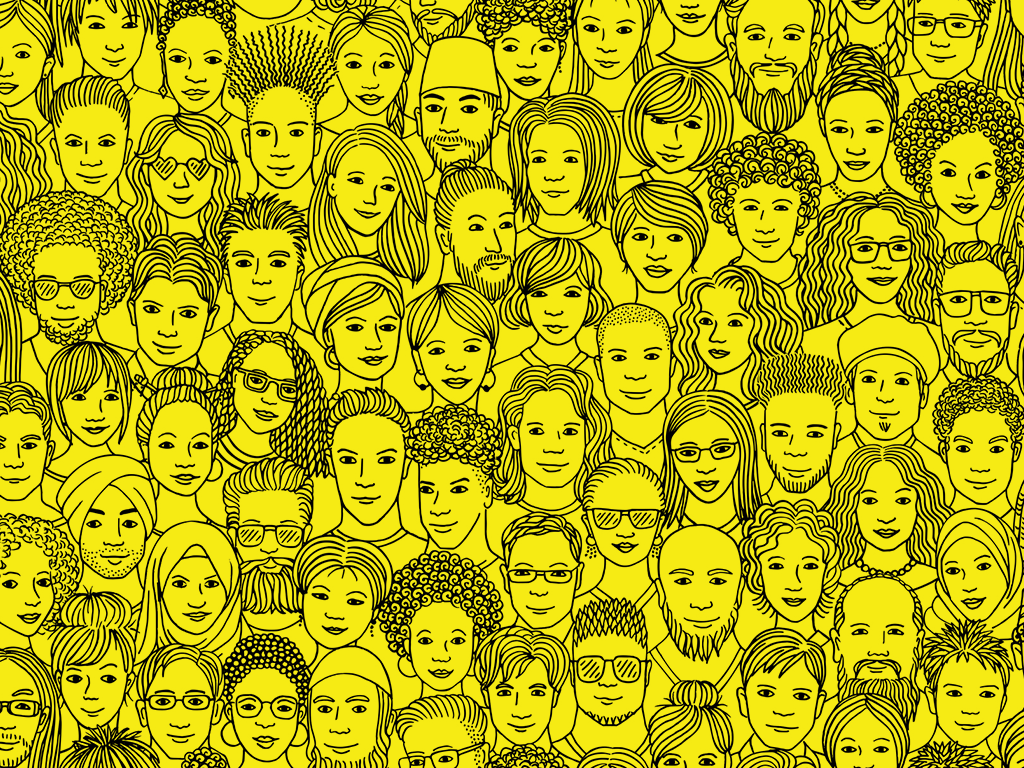The Myth of Millennial Marketing: Why Generational Generalizations Don't Work
Mar 25, 2021 / By Vanessa Horwell
In the opening spoken dialogue of the song "I Got Life" in the Broadway musical/hippie zeitgeist Hair, Claude, a central character in the show's plot, engages in a generational debate with his parents. It's an exchange baby boomers of a certain age should well recall:
Claude: This is 1968 dearies, not 1948…
Parents: What has it got? 1968. May I ask? What the hell you got 1968 that makes you so damn superior? And gives me such a headache?
A half-century ago, it was baby boomers chastising their elders as one giant misanthropic out-of-touch lot while those very same elders, in a later verse, criticized their children for having a "lot of nerve".
Any of this sound familiar? It should. Swap out 1968 with any decade closer to now, and you begin to get the idea.
Today, Millennials, Sixties Children offspring, create "OK Boomer" memes – an endless series of generational putdowns, while boomers, never ones to go quietly into the night, rattle on about their entitled boomerang kids who left the nest for college and early adulthood only to return home until age 30 and beyond. Sometimes waaaaay beyond.
While this is no scientific poll, it seems to this writer that the timeless game of generational generalization is alive and well. For marketers trying to attract, retain and engage both groups – up-and-comers too – it's as pointless as ever.
"Talkin' 'bout my generation"
Why? Because for starters, the number of years that span a generation, let alone different generations – which is nothing more than a demographer's choice – is considerable. Let's stay with our favorite baby boomers to illustrate the point.
The cohort of US baby boomers (children born between 1946-1964) peaked at 78.8 million in 1999, including foreign-born who moved here and remained the largest living group of people until 2019. Whipping out my generationally appropriate slide rule, it tells me that 1946-1964 is an 18-year difference. That's a significant amount of time, overlapping three tumultuous decades, which included fundamental shifts in how we lived, shopped, and were marketed to. It's also an enormous amount of people, each with unique needs, wants and desires, with some of those interests in conflict within the same individual, and of course, evolving.
The differences within one generation are even more apparent when you compare and contrast its extremes: At the end of 1946, only 44,000 US homes had a TV and World War II was barely 12 months in the history books. In 1964 Beatlemania kicked off to a youth-obsessed nation in which 51.6 million households owned a TV, and some of those signals were being beamed from satellites in space.
Generational pacing break: which of those years, 1946 or 1964 sounds more like the present? Give up? Hint – the answer will not be broadcast over shortwave (radio, folks) or your CONELRAD station (a.m. radio and TV).
As you might have guessed, marketing to Millennials en masse encounters the same pitfalls of marketing to boomers, for mostly the same reasons. While the demographic dividing line is a bit more amorphous, most scholarly studies on the group place its generational start date between the years 1980-1983. Pew Research pegs it at 1981.
For a blog about the pitfalls of generational marketing, 2021 is a milestone year. It's the year the oldest Millennials turn 40. Some, like this blog's writer, already have. Us Millennial geezers were born at the dawn of the now-retired Space Shuttle, the Cold War's twilight (minus its last terrifying gasps) and the launch of now obsolete MTV and the first IBM personal computer, the great (great) grandfather to PC's today. At the tail end of our 72.2 million strong are the "kids" born in 1996 – the end of my freshman year in high school. Whipping out my trusty smartphone (full disclosure: my slide rule was actually a slide rule app J) and, it too tells me that there's a 15-year gap between the oldest and youngest among us.
As a newly minted 40-year-old, I'm rapidly going gray, my lower back feels like it just turned 60, and all of a sudden, terms like blood sugar, blood pressure and 401(k) have taken on new meaning. Something tells me these terms are not part of your typical 25-year-old's word cloud. Quarter century-year-olds have other things on their mind: student debt, first/second apartments, first/second jobs, grad school, serial dating, and (Covid notwithstanding) lots of late nights and partying.
Aside from the fact that those born in 1981 and 1996 encompass the same generation, how much do we really have in common? Another generational pacing break: the answer to this question will not be turned into a one-minute expressive video on TikTok, the preferred social media platform for those under 30.
Lessons Learned for (Gen) "ZZ Top?"
For now, Generation Z – the placeholder name for those born in the late 1990s to about 2012-2015, represents the top of the generational food chain. The youngest are in kindergarten and the early elementary school grades, playing/creating video games in the online platform Roblox, listening to songs on Kidz Bop, and watching the animated superhero cartoon, PJ Masks on TV. The oldest are two years post-college with an entirely different set of brand-related and marketing priorities.
If ever there was a time for marketers to finally jettison the myth that they can market to whole generations – groups with little in common beyond the years they overlap – it's now. Instead of trying so hard to tap into this new, young (and if we're not careful another student loan debt-saddled generation) customer base en masse, isn't it better to build a marketing campaign that's tailored to specific customer needs, meeting them where they are, in virtual, and eventually again, in physical spaces?
Fortunately, whether you're 70-something or 20-something, a teen, tween, or still in single digits, all generations have become increasingly tech-savvy, a reality that marketers are keen to note. This demographic's digitalization has given marketers greater and greater real-time insight into what their customers want and what they are likely to want, thanks to artificially intelligent predictive analytics. The granularity potential of all this micro-messaging is hard to overstate.
It also comes back to basics, to go a little analog, if you will. Whether you're young or old, all customers want to be treated with respect, not feel bombarded, and want a measure of authenticity and trust. In other words, marketers must create a brand narrative people actually give a damn about, find their buyers and cater to them. They must know their product and stay in their lane. And if they're going to ask someone from a specific generation for their opinion regarding their brand choices or their preferred cadence of online and off-line outreach, actually listen.
Parting 'YOLO' logic
As the youngest of Gen Z continues to mature, the children born in 2015 (only three years older than my adorable nephew) will be running the world by 2055. They will be 40, the same age I am today. Meanwhile, the youngest baby boomers will be turning 91. The oldest will be 109, just shy of super-centenarian status.
No doubt there will still be millions of boomer consumers around. If census estimates are to be trusted, the figure could be as high as 8 million--about New York City's size. And like the then 88-year-old Hippie anthem Hair (on who knows what number revival), many will still be singing loudly and clearly "I Got Life!"
If Gen Z marketers, using whatever newfangled technology they have at their futuristic disposal, have learned anything from their aging millennial parents and ancient boomer grandparents, they'll have the "nerve" to put an end to generational generalizations once and for all.
Now that sounds like something all "g-g-g-generations" – and the marketers within them – can embrace.
Sign up for our insights on the convergence of business and PR






